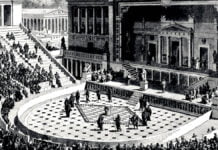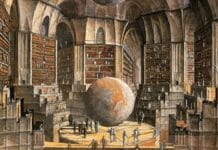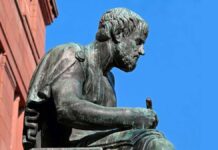An ode is a form of lyrical poetry that is expressive and elevated in tone. It often addresses a particular subject with admiration, reverence, or deep emotion. Odes are traditionally structured and feature formal language, intricate rhyme schemes, and elaborate metaphors.
The ode originated in ancient Greece, where poets like Pindar composed choral odes to celebrate public events, gods, and heroes. The term “ode” comes from the Greek word “aeidein”, meaning “to sing” or “to chant”. Greek odes were often performed with music and dance, adding to their ceremonial and celebratory nature. Roman poets, notably Horace, adapted the Greek ode into a more personal and reflective form, focusing on themes of philosophy, nature, and friendship. During the Renaissance, poets like John Milton and Edmund Spenser revived the ode, incorporating classical elements and adapting them to contemporary themes and styles. The Romantic poets, including William Wordsworth, John Keats, and Percy Bysshe Shelley, expanded the form of the ode, infusing it with personal emotion, nature imagery, and philosophical reflection.
Types of Odes
Pindaric Ode
Pindaric odes are typically choral and were initially composed for public events and celebrations, such as athletic victories. Named after the ancient Greek poet Pindar, this type of ode has a triadic structure: the strophe, the antistrophe, and the epode. The strophe and antistrophe have similar metrical patterns, while the epode has a different structure.
Horatian Ode
Named after the Roman poet Horace, Horatian odes have a more uniform stanzaic structure with regular meter and rhyme scheme. They are usually more personal and reflective, often meditative and philosophical. These odes are more subdued and contemplative compared to the grand style of Pindaric odes.
Irregular Ode
This type of ode does not adhere to a strict structure or rhyme scheme, allowing the poet greater freedom in form and style. Irregular odes maintain elevated language and serious tone but may vary in stanza length and pattern. These odes are characterised by their flexibility and innovation in poetic form.
Characteristics of an Ode
Formal Structure
Odes often follow a strict structure with stanzas of uniform length and a consistent rhyme scheme. Traditional odes have a formal meter, commonly iambic pentameter or similar rhythmic patterns.
Elevated Language
The language in an ode is often grand and elaborate, aiming to convey deep respect and admiration for the subject.
Serious Tone
Odes generally have a serious and contemplative tone, focusing on profound themes and significant subjects.
Praise and Admiration
The central theme of an ode is usually the praise or celebration of a person, object, or idea. The poet often expresses admiration, reverence, or love for the subject.
Introspection and Reflection
Odes frequently include introspective elements, where the poet reflects on the significance of the subject and its impact on their thoughts and feelings.
Themes and Motifs
Nature
Odes often celebrate the beauty and power of nature, using vivid imagery and metaphors.
Art and Beauty
Many odes reflect on the nature of art, beauty, and creativity, exploring their impact on the human experience.
Philosophy and Reflection
Odes frequently include philosophical musings and introspection, pondering profound questions about life, existence, and the human condition.
Structure and Form
Traditional Structure
- Strophe: The first part of the ode, setting the theme and tone.
- Antistrophe: The second part, often mirroring the strophe in structure and developing the theme further.
- Epode: The concluding part provides a resolution or reflection.
Horatian Structure
- Regular stanzaic pattern with consistent meter and rhyme.
- Each stanza typically follows the same structure throughout the poem.
Irregular Structure
- Flexible and varied in form.
- It allows the poet to experiment with different patterns and rhythms.
Notable Examples
- Ode to a Nightingale by John Keats
- Ode on a Grecian Urn by John Keats
- Ode to the West Wind by Percy Bysshe Shelley
- Ode: Intimations of Immortality by William Wordsworth
- Ode to Joy by Friedrich Schiller
An ode is a powerful and versatile form of poetry that allows poets to express deep admiration and contemplation of significant subjects. Its rich history, formal structure, and elevated language make it a timeless and influential genre. The ode has evolved through the ages, adapting to the changing sensibilities of poets and their societies while maintaining its core elements of praise, reflection, and elevated expression.



























